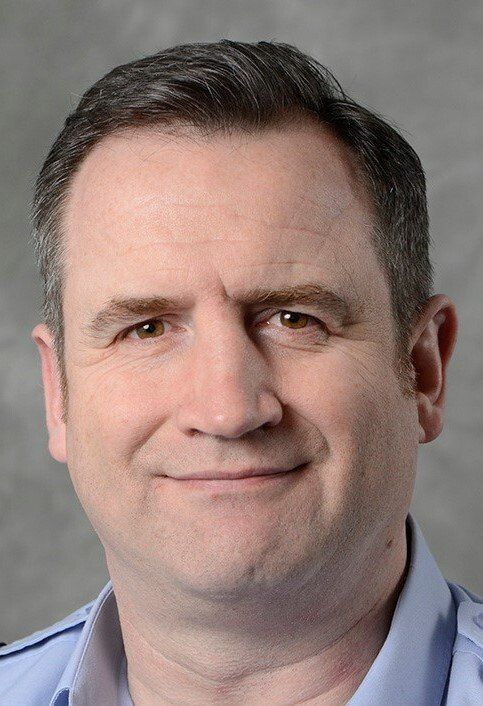
What do you see as the major challenges facing Defence
in 2022 and beyond?
What do you see as the major challenges facing Defence
in 2022 and beyond?
The biggest challenge to the MOD is not the uncertain world we live in, it’s the MOD’s own internal inability to adapt to changes in the operating environment. Whilst Defence is very good at dealing with a tactical crisis, it’s ponderous at evolving to the rapidly changing real-world challenges that we now face. Interestingly, it’s not that Defence doesn’t understand
why
changes are occurring - it actually possesses some good, insightful strategy (although one might argue they are often more unfunded ambitions, not strategies) - it invariably struggles with the execution of those strategies - the
what,
how and
when -
particularly if the change needed is profound and not just incrementalism. As such there tends to be a dangerous lag between strategy, execution and delivery, brought about by organisational glue, suffocating bureaucracy and a failure to address the underlying ‘blockers’ (including financial, commercial, procurement and people processes). Sadly, this is not new and Lord Levene said as much in his review a decade ago.
What changes do you think Defence can make to address
those challenges, both now and in the future?
What changes do you think Defence can make to address
those challenges, both now and in the future?
So what could Defence do differently? The following recommendations are bold proposals, some of which will be hard to implement, but large-scale reform is required sooner rather than later...with the price of changing later being far more costly in more ways than one.
PEOPLE

The primary purpose of Defence is to win. To win you need high-performing teams. High-performing teams need people at the top of their game and whilst Defence has many excellent people, the inconvenient truth is that a not insignificant part of both the military and civil service workforce are not the right people to handle the challenges ahead. The following recommendations would help to address those issues and create a Whole Force that is fit for purpose.
ORGANISATIONAL DESIGN
PEOPLE

The primary purpose of Defence is to win. To win you need high-performing teams. High-performing teams need people at the top of their game and whilst Defence has many excellent people, the inconvenient truth is that a not insignificant part of both the military and civil service workforce are not the right people to handle the challenges ahead. The following recommendations would help to address those issues and create a Whole Force that is fit for purpose.
Performance-related employment
Performance-related employment
In line with industry norms, the introduction of performance-related pay and retention policies would no longer offer crown servants a full career. MOD would no longer be a place for people to become too comfortable. Additional performance incentives other than just rank and grade could be used to encourage and reward excellence. With the sizeable efficiencies made from adopting the above approach, budgets could be re-invested to drastically improve the pay & T&Cs of service for higher performing crown servants.
Create flatter career structures
Create flatter career structures
The number of layers in Defence is part of the problem, as everyone has a ‘view’ which stifles rapid progress and induces prolonged staffing processes. This has been made worse in the digital era where overlaying 21st Century IT onto 19th century Napoleonic hierarchies has created the worst of both worlds. Whilst our military must be mindful of alignment to wider allied structures for coalition building, let’s not be slaves to the past and lead the way in creating flatter people models empowered by digital technology.
Drive Whole Force 2.0
Drive Whole Force 2.0
The IR correctly tells us there has been a blurring of peace and war, and home and away. Accordingly, the military’s relationship with industry needs to become increasingly blurred and the 20th century model of “Defence” based on heavy metal and an expeditionary punch needs a re-think. Where appropriate, HMG needs to break the fixed, transactional, customer-supplier mindset of our current procurement models and enter true strategic partnerships with its industrial base. This is especially important in the Space and Cyber domains, where unlike the more traditional domains, most of the contested terrain is industry-owned and operated.
The MOD needs to get its people beyond the traditional boundaries of Defence organisations and properly embedded within the commercial world and academia. Over time this will create a larger, strategically aligned, Multi-Domain national workforce, that can harness its collective Whole Force talent, and also adapt to some of the contemporary challenges, particularly sub threshold operations.
Reduce reliance on external consultants and SMEs
Reduce reliance on external consultants and Subject Matter Experts (SMEs)
There is an over-reliance on consultants and external SMEs, who may bring fresh insights, but rarely, in my experience, possess the knowledge of how to apply those insights in the context of how Defence works. The adage of ‘you can only change what you understand’ rings true, and in my view most externals struggle to make a lasting impact.
That is not a criticism of them individually, and of course Defence does need their wider perspectives, but this is more a reflection that the pendulum has swung too far. The MOD seems to be increasingly favouring external hires over home grown talent, who understand the complexity of Defence and its underlying processes. And of course, change is not just about initiating the change, it’s also about making it stick and the additional resource tail necessary to embed change is rarely provisioned once the “externals” have moved on.
ORGANISATIONAL DESIGN
ORGANISATIONAL DESIGN

The MOD needs to move away from rigid hierarchies, a centralist bias and fixed organisational design. This ‘fixed’ thinking is in part driven by rank and grade structures, but the inconvenient truth is that this dogma often unintentionally creates the very outcomes it is trying to prevent. Instead, there needs to be flexibility for organisations to configure themselves around the problem they are trying to solve. Of course, centralisation and rigid hierarchies have their place in some scenarios, but in our uncertain world, problem sets often requires more creativity and agility, where decentralised or distributed organisations are better optimised for more dynamic challenges. .
PROCUREMENT AND ACQUISITION
PROCUREMENT AND ACQUISITION

There are a range of procurement initiatives which could make a fundamental difference:
Introduce agile procurement methods
Introduce agile procurement methods
One size does not fit all with procurement methodologies, and I’d suggest that Defence needs to embrace (and be skilled in) the full range of approaches from Agile to Waterfall (and everything in between) to deliver the diverse set of outcomes it desires (see previous point on organisational design).
Whilst there have been laudable attempts at some of the more fast-spin models, they tend to be overlayed on top of traditional models. Consequently, they quickly become anchored by the accepted norms of traditional procurement models and the dogma the institution is comfortable with.
Ring-fence portfolios
Ring-fence portfolios
Currently when one large core programme has a cost over-run, the offset often must be found across the TLB portfolios. This has a disproportionate effect on smaller programmes, which in turn has a disproportionate effect on Defence outputs. Splitting procurement into a series of ring-fenced portfolios, ranging from large core ‘traditional’ programmes to Small/Medium programmes, would help to alleviate this issue. Each portfolio would be expected to cut its cloth accordingly, no matter the short-term pain, to drive better behaviours and longer term outcomes.
Reduce the number of innovation hubs
Reduce the number of innovation hubs
Innovation hubs across Defence create an illusion of progress, when in fact they are often a mere distraction that do not address the underlying cause. Ideally MOD needs to to fix its’ core procurement processes, move away from seductive sideshows and to innovation as BAU.
Enable rapid procurement of capability
Enable rapid procurement of capability
In Afghanistan and Iraq, Defence recognised a (relatively speaking) familiar threat and the procurement machine reacted accordingly. It needs to draw parallels with the (best bits of) UOR processes from those conflicts, to enable the rapid procurement of capability for our contemporary environment. Yet with a reasonable understanding of the evolved threat in our new Multi-Domain world, particularly in cyber and space, HMG has still not woken up to the fact that it is being boiled like a frog. The Defence & Security Industrial Strategy heralded an era of competition where appropriate vice competition by default, unfortunately this direction remains intent not action when it comes to commercial practice.
Reduce the strive for certainty
Reduce the strive for certainty
The MOD has a culture that in essence, tries to boil everything down to certainty, and is consequently extremely risk adverse. This is of course, in part, due to the necessary accountability HMG owes to the taxpayer. However the reality is that this quest for certainty drives enormous costs into programme delivery, resulting in perverse behaviours and often blows apart any honest assessment of VfM.
In my experience striving for certainty in an uncertain world is the quickest route to expensive irrelevance. Defence (and Industry) programmes are often slaves to milestones crafted at a moment in time, without the collective courage (and supporting commercial models) to recognise that they sometimes need to do something different.
Adopting an approach that acknowledged a broad direction of travel, that focused on optimising organisations, partnerships and contracts for rapid adaptation, would help create a Defence that could roll with the punches the world throws at it.
CONCLUSION
CONCLUSION
To conclude, Defence needs to transition towards strategies of adaptation rather than fixed end-states; to have the flexibility to employ the right people and to optimise organisational design against the problems it’s trying to solve.
Whole Force 2.0 is a necessity for 21st Century Defence-Industrial partnerships, which in turn will create a large, more integrated national workforce aligned to challenges outlined in the IR. Yes, this is difficult stuff to achieve, but it won’t be as painful as the consequences of continuing to tinker around the edges and putting our head in the sand. And perhaps most importantly, Defence needs to adopt a mindset where certainty is our enemy and uncertainty is our friend.
Our viewpoint
Our viewpoint
Many of the points that Chris makes in his interview, very much resonate with our own experience and observations. With a global security environment evolving at pace, it often seems that Defence is not yet ‘shaped’ to react and respond accordingly - whether that be because of its skill sets, its organisational design or its procurement and acquisition process and approach.
In his interview, Chris makes a range of bold proposals on the changes he thinks that Defence should embrace if it is to succeed in the new environment. But how should changes such as these be delivered, and how can Defence move beyond initiating change to creating lasting change, change that sticks? As experienced Defence change consultants, we believe that change works best when the external consultants aren’t just brought in to write a white paper or a plan, but are an integral part of the entire change process. Consultants should have a deep understanding of how defence operates (as Chris observes ‘you can only change what you understand’), combined with commercial consulting experience and a pragmatic, flexible approach.
In our experience, success comes from being a fully integrated part of the ‘home’ team, working together through the different stages of ‘The Change Curve’ from design through delivery to Business As Usual. We think it’s important to embrace different viewpoints, and work in partnership with those that must ultimately own and implement the change. We hope we help deliver lasting change by understanding how to develop buy-in and ownership, that helps maintain change long after we have left.
Find out more about our services
Find out more about our change and transformation services
Interested in learning more about our Change Strategy & Design, P3M and Technology Exploitation service offers, and how we can help you achieve change, then visit our Services page.



